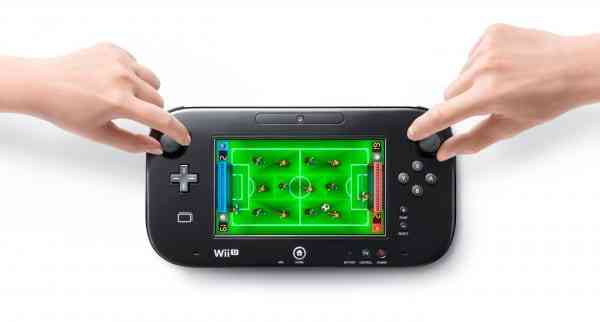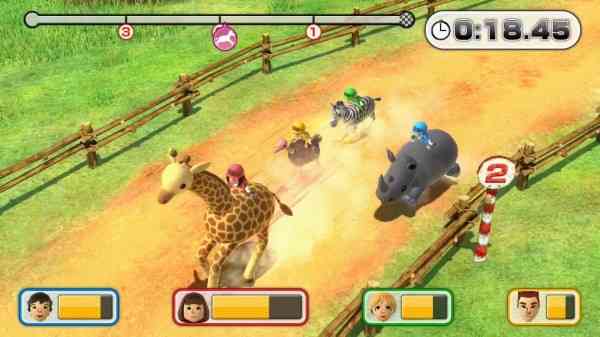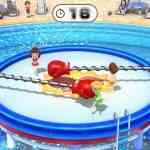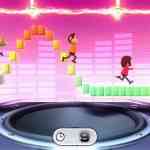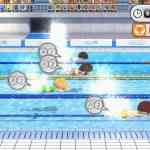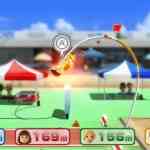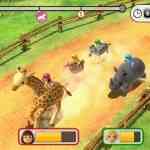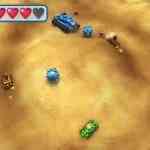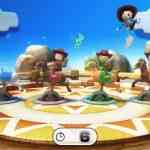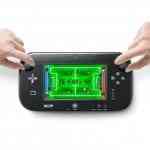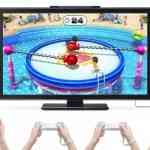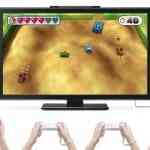About three years ago Nintendo released Wii Party. Taking user avatars, known as Miis, players were introduced to loads of mini games suitable for a party situation. Well Nintendo’s next generation hardware finally gets its own version of the game in the form of Wii Party U. The franchise returns with over 80 mini-games that are tailored for many of the Wii U’s features. Some of these games involve four people playing on a single tablet, which results in some chaotic but entertaining scenarios. All in all Wii Party U is indicative of Nintendo’s goal for the Wii U; to bring local multiplayer gaming back to life. That said, does Wii Party U offer enough to make it worth the price of admission?
At its core Wii Party U is a collection of mini-games. There are four modes available for gamers to play: GamePad Party, TV Party, Mini-games and House Party. TV Party functions much like Mario Party, where players quest around a game board battling it out in various types of mini-games. House Party is full of a variety of unique mini-games, many that are much shorter game types then those found in the previous version of the game. For me and my family, “Name That Face” took the cake as the most entertaining game we played here. One person must use the GamePad to take a picture of their own face acting out an expression, while the remaining players guess what that face represents choosing from four answers. Unfortunately, this game mode lasts only three rounds, clocking in at about 10 minutes of game time, but we had some fun playing it.
GamePad Party is a mode designed for a pair of players. In this mode the GamePad is the only thing necessary. Simply put, you flip the GamePad on its backside with the screen facing up and each player holds onto a side. Nintendo includes a small stand in the game box to accommodate the backside of the GamePad allowing the top to be level when on a table. Games like Tabletop Foosball or Tabletop Baseball are available and are surprisingly amusing. Cooperative modes are also available in GamePad Party too. One of my favourites was Animal Matchup where you play with a friend in a matching game. Side activities are included to keep you going in case you’re having a rough time or are in need of a second chance. Many of these games are incredibly simple, but they also have an addictive nature to them. All in all I thoroughly enjoyed GamePad Party mode.
Mini-Game Mode is exactly what it sounds like, a compilation of mini-games. Wii Party U can offer enjoyable moments for a group of people, but the issue here is the fact that there are more stale games than exciting ones. It should be noted that the majority of Wii Party U’s four player games are played with Wii Remotes, so naturally you’ll need a full set to accommodate everyone and allow them to participate. Wii Party U does come with a new Wii Remote in the box though, so that is a bonus. During the mini-game mode you can create micro tournaments. Players with broadband internet access are given the option to access Miiverse. From here, you can rate specific mini-games, view other players’ ratings and leave comments or draw pictures. In theory, micro tournaments area a great idea but unfortunately I found that this mode suffers because of the ratio of how many mini-games are actually fun when compared to how many I found myself wanting to skip over.
Beyond the number of mini-games and modes available, there isn’t a whole lot to unlock in Wii Party U. When I was playing the TV Party Mode I ran into a “repeat” issue of playing the same games over and over again. Mario Party, which is an older “party” game in the same vein of Wii Party, has a scheduled system ensuring that at the end of each round a mini-game is played. Wii Party U’s TV Party Mode does nothing to maintain a steady stream of mini-games, and there were times where a mini-game would not come up for at least 10 minutes. I found that this would lead to boredom and disarray. An improvement in pacing could have easily fixed this and made it a more exciting and more enthralling experience.
Presentation wise the game brings nothing new to the world of graphics and sound effects. The game’s interface is clean and sharp looking though, and it works for the type of game that it is. The actual gameplay lends to a typical “Nintendo-esque” look and you can tell it doesn’t push the hardware. The same can be said about the sound department. Music and audio chirps are similar to Nintendo Land and in the end all the sounds manage to do what they are supposed to and get the job done. I guess in many ways the whole presentation pack can be best described as functional, as nothing really stood out in these areas.
Ultimately, I found that the amount of enjoyment I had with Wii Party U was a little too dependent on the company I had around at the time. Though I understand party games excel when in a party atmosphere with other people, Wii Party U simply had one too many design flaws. Mini-games with varying degrees of enjoyment really took away from the experience, and during my time with the game it only took a couple painful mini-games in between the good ones to sour the mood for this reviewer on more than a few occasions. Though there is some fun to be had, the game lacks the refinement Nintendo is typically known for and the result of such is a game that can vary from enjoyable to mediocre at varying times.
